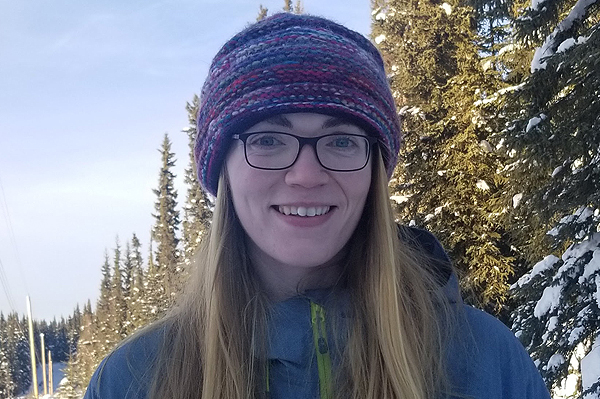Sarah Williamson's path to climate science was shaped by her Alaskan upbringing, where she witnessed the effects of climate change firsthand.
"In Alaska,” she reminisces, “strange weather phenomena were just part of growing up. Permafrost melting, glaciers inching forward… there's a road in Seward that leads up to a glacier and every year, as the glacier recedes, the road gets a little longer.”
Today, Sarah is a fourth-year graduate student in the Computational Research In Ice and Ocean Systems Group (CRIOS) at the Oden Institute for Computational Engineering and Sciences. Here, she develops parameterizations for mesoscale eddies in global climate models. These swirls of seawater pose a challenge to global ocean simulations. This is because while these eddies measure about 100 kilometers across, most global climate models span a whopping 10,000 kilometers—a gap as wide as a road trip from Chihuahua, Mexico, to the North Pole.
"In global climate models, the grid scale is often too coarse to capture these coastal eddies," explains Sarah. Her parameterizations work like a plug-in for global climate models, propelling them beyond their original design.
In her journey through grad school, Sarah acknowledges, "I've delved into a wealth of physics. Mesoscale eddies are still new to me. But what's captivating is the diverse methods people use to compute these parameterizations, each with its wins and costs — it’s a fascinating puzzle."
Though she grew up 400 miles inland, Sarah was never far from oceanography. Her hometown of Fairbanks is a hub for research on glaciers and ice sheets. “What Fairbanks really helped me see is how important it is to care about climate change, because its effects become greatly exacerbated near the poles. The temperature disparities resulting from climate change are larger than what you would get closer to the equator," she observed.
Sarah's heart remains tied to her Alaskan roots, particularly the enchanting autumn months. She describes the vivid transformation of the tundra into a sea of reds and oranges against the backdrop of towering mountains during August and early September as "unlike anything else."
As life led her away from Alaska, she traded hiking Fairbank’s Angel Rocks for indoor bouldering, as a source of fun and stress-release. "It's like a physical puzzle that you need to solve - how to get up a route,” she explains.
In the face of climate change, Sarah's drive remains unshaken. Acknowledging the frustration of slow policy changes but drawing strength from her love for her work, she says, "I definitely think that there's a wave of resignation that has happened for climate scientists. We know that climate change is a problem. We know we should do something about it. Yet, politicians care more about money. Especially in Alaska, we have politicians who get a lot of money from oil companies and, as a result, they’re drilling in the Arctic. So yeah, I think that there's resignation there. But I also think that people are in this field, because this is what they enjoy doing. If you enjoy doing it enough, then it's easy to keep going and keep working on it.”
Sarah Williamson's journey from exploring the wilderness of Fairbanks to delving into the depths of climate science is a testament to the power of curiosity and the lasting impact of one's roots. Her story echoes the sentiment that a deep connection to nature can drive us to make meaningful contributions to the world around us, just as she does every day in her pursuit of understanding our changing planet.
